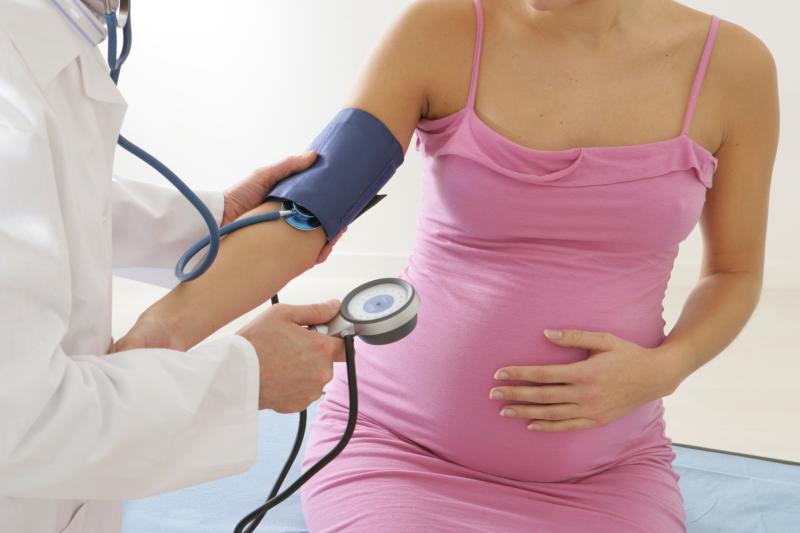
Pregnant women with elevated blood pressure (BP) levels below the diagnostic criteria of hypertensive disorders of pregnancy (HDP) at 28 and 34 weeks of gestation are at high risk of developing stage 1 hypertension 5 years later, a study has found.
The study included 329 women from the ROLO study (Randomized cOntrol trial of LOw glycaemic index diet to prevent the recurrence of macrosomia). Researchers measured maternal BP at several timepoints: 13, 28 and 34 weeks’ gestation, day 1 postpartum, and at the 5‐year follow‐up.
Systolic (SBP) and diastolic BP (DBP) were categorized as normal (SBP <120 and DBP <80 mm Hg), elevated (SBP 120–129 and DBP <80 mm Hg), stage 1 (SBP 130–139 or DBP 8–89 mm Hg) or stage 2 hypertension (SBP ≥140 or DBP ≥90 mm Hg).
Results showed significant positive associations between SBP, DBP and mean arterial pressure (MAP) in pregnancy and the same parameters at the 5‐year follow‐up. Women with elevated BP in pregnancy were three times (95 percent confidence interval [CI], 1.05–8.52; p=0.04) as likely as those who had normal BP to have stage 2 hypertension at 5-year follow‐up.
Moreover, elevated BP at 28 and 34 weeks’ gestation was associated with a more than twofold higher odds of having stage 1 hypertension at follow-up (odds ratios, 2.68, 95 percent CI, 1.36–5.27 and 2.45, 95 percent CI, 1.22–4.95, respectively; p=0.004 and p=0.012).
Each 1-mm Hg increase in SBP and DBP at 34 weeks of gestation increased the odds of having stages 1 and 2 hypertension 5 years later by 4 percent and 5 percent, respectively.
In light of the findings, the researchers recommend that pregnant women with raised BP below the diagnostic criteria of HDP be flagged for follow‐up postpartum, which could potentially facilitate more timely nonpharmacological interventions and, in turn, benefit overall lifetime health.